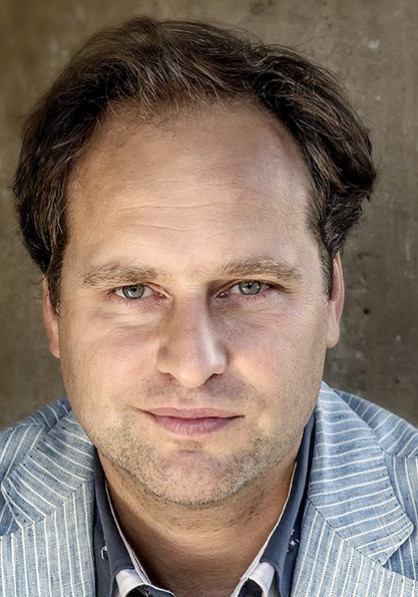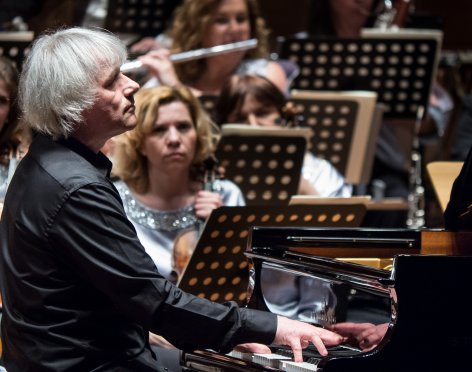Ludwig van Beethoven: The Consecration of the House Overture
In 1822, Ludwig van Beethoven (1770-1827) was exceptionally busy writing many a grandiose composition: he had been working on his monumental Missa solemnis for a long time, on his final and - in themselves memorable - piano sonatas, and had already begun composing his Symphony No. 9, when he was commissioned to compose a piece for the upcoming opening ceremony of the Theater in der Josefstadt. It was no coincidence that it was Beethoven they had asked, as the opening production of the theatre was going to be Kotzebue’s The Ruins of Athens just like at the inauguration of the German Theatre in Pest ten years earlier, whose incidental music had also been written by Beethoven. In this way, the otherwise established piece (on the foundation of a theatre) turned into an exclusive novelty work. Although Beethoven had always been very particular about overtures (for his single opera, he had composed four overture versions), he did complete the commissioned overture by the given deadline, even being under this excessive workload and virtually deaf.
This overture stands out from the compositions written around the same time. Contrary to the others, it doesn't search for new ways but turns to the past. The slow, solemn, fanfare-like introduction is followed by a virtuoso, rapid theme based on counterpoint, which finally develops into a double-fugue evoking Baroque overtures both in form and mood. The composer excelled both in scoring and in counterpoint. Another curiosity is that as opposed to the profound and transcendentally-inclined works written in this period, this piece has no particularly deep message to convey. It alludes much more to the actual tradition and great figures of music theatre, inviting them to the new playhouse to take possession of what is built for them.
Ludwig van Beethoven: Piano Concerto No. 5 in E-flat major (“Emperor”)
I. Allegro – II. Adagio un poco mosso – III. Rondo-allegro
Beethoven completed his fifth and last piano concerto in 1809-10, at around the same time as Vienna was under the occupation of Napoleon's army. The entire political scenery of Europe had been left hanging in the air, and Beethoven with his revolutionary spirit saw in it a chance much rather than danger. Its key, character and grandeur evoke Symphony No 3 (“Eroica”). Its by-name “Emperor” doesn’t refer to a specific sovereign and wasn’t added by Beethoven but by the London-based publisher of the composition, who was of the opinion that composition’s sophisticated manner, monumentality and the position of the soloist depict the image of an emperor. It has undoubtedly a grain of truth in it, and the idea inevitably occurs to us that the emperor actually stands for Beethoven himself, who was enthroned thanks to his musical revolution. This idea was not conjured up by Beethoven, however. Neither did he act as soloist at the piano concerto’s premiere, as his worsening hearing wouldn’t have allowed him to.
How does sovereignty appear? Right at the beginning, instead of the conventional orchestral introduction, the piano interrupts the orchestra and plays a passionate cadence. Only following the piano’s message can the orchestra come up with the expository material. The first movement is dramatic and monumental, dominated by passion and solemnity; there is no space for insecurity or self-doubt. The piano makes a declaration, and the orchestra responds with a propulsive echo. On occasion, it approves, at other times, it is exuberant or resounds as a choir, and now and then, it is listening attentively. The first movement takes up about half of the 40-minute long composition.
The second movement is chorale-like, and as such, it is differently elated than the previous one. Here, the emperor - whoever he might be - appears to be on personal terms with the transcendent and with the noblest secrets of existence.
At the end of the movement, the piano soloist experiments with a new theme, which will also be the theme of the closing Rondo. It was no novel idea to launch the third movement of a concerto with a solo part, but the 3rd movement of this composition already starts in the 2nd and seems to be the brainchild of the piano soloist and reinforces his dominance. The closing movement is again energetic and solemn, and puts the soloist in a powerful and compelling position, who has - despite all - a sense of humour and a good deal of playfulness.
Robert Schumann: Symphony No. 2 in C major
I. Sostenuto assai – allegro ma non troppo – II. Scherzo, allegro vivace – III. Adagio espressivo – IV. Allegro molto vivace
It was first in 1844 when Robert Schumann’s (1810-1856) mental state took the better of him. He had severe mood swings, suffered from depression, death anxiety, insomnia, tinnitus and memory disorders. It was in this agonising period when he started composing the symphony. We can name three composers inspiring the work. It was around this time when Schumann became familiar with Schubert’s Symphony in C major (“The Great”), which he regarded as the benchmark of a modern symphony in several respects. He was also immersed in profound studies of Bach's music to improve his counterpoint skills. The third source of influence was, of course, Beethoven, whose symphonies showed the recurring motif of a journey from darkness to light, which was highly relevant for Schumann in the midst of his adversities. In essence, this symphony of Schumann's is a reflection of an emotional healing process. The first movement begins with a mysterious introduction, which becomes increasingly more tensed until it finally it peaks in an upward-striving principal theme. This movement is governed by this upward-moving tendency.
The second movement basically involves two trios composed in one. Besides the permanent dynamism and progress, Schumann also flashes his excellent sense of character - which we already know from his character pieces - this time, with an orchestra. The drafts of the symphony were soon finished, but the scoring proceeded only slowly because of Schumann’s illness.
There are sparks of spiritual peace and tranquillity in the third movement but often as a slow and distant ideal.
The closing movement conveys the recurring desire for and efforts to reach happiness. Also, an actual Beethoven song appears in the movement from the song cycle An die ferne Geliebte (To the distant beloved), thus also the Lied-composer Schumann emerges for a short while, although not with one of his own compositions but with a Lied from the oeuvre of the symphonist Beethoven.
All movements of the symphony contain evocations, allusions, but mostly not in Bach’s style. The composition was first performed under the baton of Schumann’s friend, Mendelssohn.







